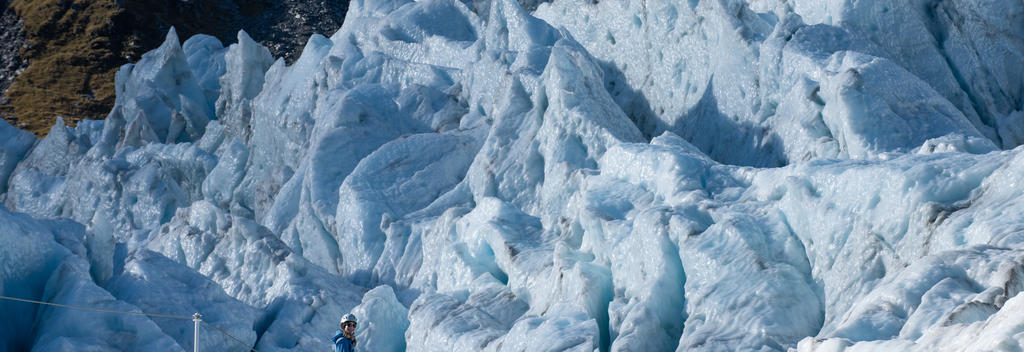-
Popular places to visit
Popular things to do
Helpful tips
Here's a few useful links to help with planning your trip to Aotearoa New Zealand.
-


Witness the puzzle of huge valleys of ice that extend well below the snowline, almost to the sea. Here the ice age is still underway.
While glaciers around the world are retreating, the Fox and Franz Josef glaciers still flow almost to sea level. The temperate climate at this low altitude means these glaciers are among the most convenient to visit in the world. An easy walk is available to the foot of Franz Josef Glacier along the river valley with steep sides bearing gigantic horizontal scars from when the glaciers have retreated and advanced over millennia. You can also take in the view of magnificent Fox Glacier from Cook Flat Road (on your way to Lake Matheson). The sheer enormity of both glaciers is very humbling.
Here are some facts to help you get the picture: Over its 13 kilometre length, the Fox glacier plummets 2,600 metres from high in the Southern Alps. It is fed by four alpine glaciers that receive around 30 metres of snowfall each year. The snow is compacted at the top of the glacier into blue ice hundreds of metres deep.
This ice slides down hill to the more level river valley below, where it is still 300 metres thick. The movement is lubricated by ice that melts under pressure between the glacier and the steep valley floor. This effect, combined with the high snowfall feeding the top of the glacier, means the Fox and Franz Josef Glaciers flow around ten times faster than most valley glaciers.
Shelving in the valley floor deep beneath the glacier causes cracking, upheaval and deep ravines in the glacier surface, creating a dramatic and potentially dangerous frozen landscape. Surface melting occurs throughout the lower altitudes, feeding the frigid rivers that flow out the rocky ravines and on through temperate rainforests to the Tasman Sea.